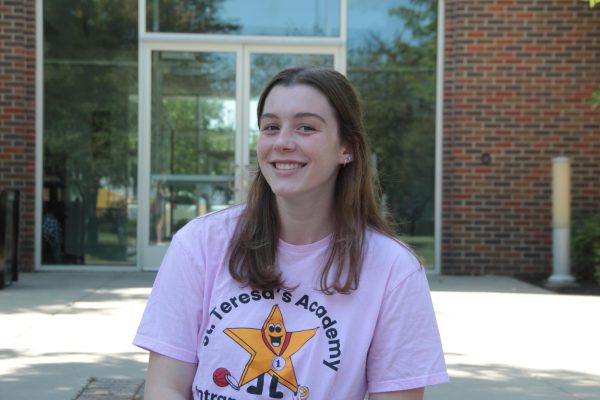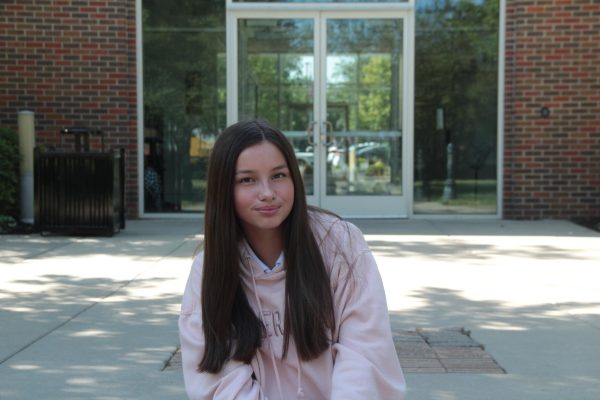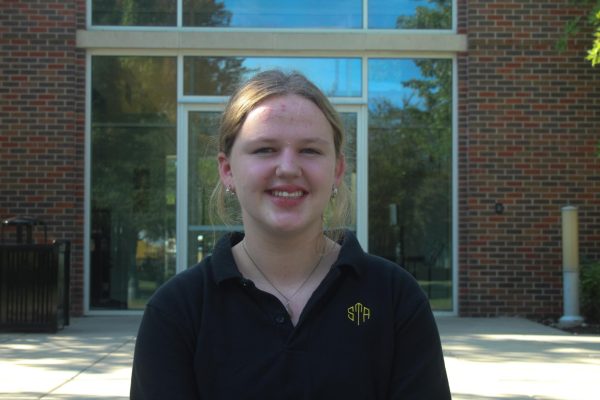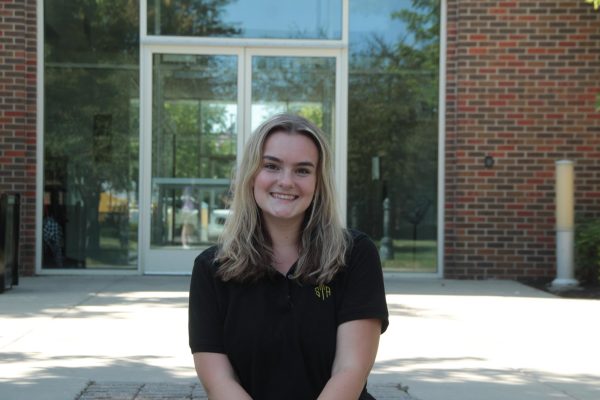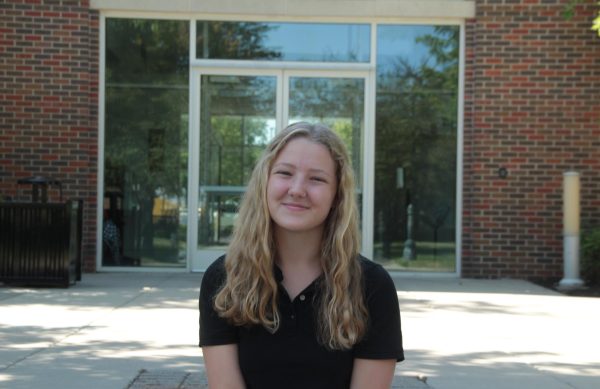To Netflix and Leigh Bardugo: thank you for enabling us
After years of waiting, opinion editor Josie Fox and multimedia editor Grace Ashley dive into Netflix’s adaptation of Leigh Bardugo’s “Shadow and Bone.” They weren’t disappointed.
May 13, 2021
In the depths of my basement on April 23, Josie and I were losing our minds. We had been waiting for months and months, and the time had finally come: Leigh Bardugo’s “Shadow and Bone” was released on Netflix.
Our “Shadow and Bone” obsession can be traced all the way back to middle school, so it’s safe to say we’ve been waiting for this moment for literal years. “Shadow and Bone” met all of our expectations and even surpassed some of them, like incorporating the companion duology “Six of Crows” into the plot of the original series.
You may be asking: “Why were you both so obsessed with this little YA, or young adult, franchise?” First of all, we actively are obsessed, so the past tense doesn’t even work. Second, everything about it — the characterization (I’m looking at you, Kaz Brekker), the worldbuilding and the pure magic of it — captures you so completely that there is no way to not be obsessed. And third, nothing about this franchise is little.
The main plot follows First Army mapmaker Alina Starkov as she and her childhood friend and fellow soldier, Malyen “Mal” Oretsev, make their journey to and across the Fold. What is the Fold, you may ask? Well, it is a gigantic swath of darkness filled with monsters called volcra that is splitting the country Ravka (basically Russia) in two and was created by a very powerful Grisha — which are people who can control various elements such as fire, water or even the human body using the Small Science — known as the Black Heretic.
The Fold has been there for hundreds of years, and it has basically destroyed how the country functions due to the fact that it cuts Ravka off from its port cities in the west. But, alas, there is a myth of the fabled Sun Summoner who can banish the Fold forever that keeps people from giving up hope completely. And it’s during Alina and Mal’s crossing of the Fold that Alina discovers that she is that Sun Summoner. She goes from a run-of-the-mill First Army soldier, meaning the part of the military that is not made up of the Grisha, to the protege of the infamous Darkling as she trains to save all of Ravka in the Second Army, which is composed of the powerful Grisha.
Now let’s cross the True Sea over to Ketterdam — a dingy port city in the country Kerch. There we find Kaz Brekker and his gang of “crows,” most notably, Inej Ghafa and Jesper Fahey. Kaz, Inej and Jesper are hired by a wealthy merchant Dressen to kidnap the Sun Summoner for money they just cannot refuse. In order to accomplish such a mission, they must face certain death — crossing the Fold.
From here, the plots converge as Alina makes her way to the Little Palace to train with the Darkling — the leader of the Grisha who can manipulate shadows that is played by Ben Barnes — and the Crows try to infiltrate her newfound life for the reward of a lifetime. Of course, drama ensues as Alina has to learn a completely new way of life and as Kaz, Inej and Jesper try to get close enough to take her away from it. Really, it’s everything we could have dreamed of.
And then some.
Oh, yeah.
First off, while “Shadow and Bone” technically is a fantasy series, there was nothing overly fantastical about the Netflix series, which made it feel overwhelmingly real. As an aspiring Grisha myself, I genuinely felt like I too could control wind and create storms or have fire burst right from my hands. The fantasy was reality, not something out of reach or overdone, which gave a very human element to the entire story.
This was only helped along by how well the characters were written and portrayed on the screen. The cast was excellent in every single role, whether you look at Jessie Mei Li as Alina, Ben Barnes as the Darkling, Freddy Carter as Kaz or Kit Young as Jesper — especially you, Kit. All of the actors understood their roles and played them expertly. Don’t even get me started on the actors for Matthias, a Fjerdan Drüskelle from the north, and Nina, a powerful Ravkan Grisha who can manipulate the human body. The chemistry and the banter. Oh, my god. They were just too perfect, and I will always be grateful for that.
For Nina and Matthias — think Romeo and Juliet, but with international implications and religious trauma. Which brings in another aspect of “Shadow and Bone” that was executed so well: the politics and religion. Ravka is constantly at war throughout the “Shadow and Bone” series and even beyond, primarily with Fjerda to the north and Shu Han to the south and there are a ton of racial implications that come with that. This was not only seen in additional discrimination of Alina’s half-Shu identity, but also in the anti-Shu propaganda that litters the First Army camps.
Throughout the series, Alina is constantly targeted because of the fact that she is half-Shu, and it brings up some incredible points about how racism fuels the lack of progress in society. She was seen as sort of useless or as an invader by many of the people around her — to the point of one character saying that she should change the shape of her eyes before being presented to the king of Ravka so that she would be more presentable for him — when the reality of her character is that she is the only one who can save them all.
As Grace said, since Alina is depicted to be a savior of sorts she automatically becomes a Saint to the Ravkan people after her power is revealed — Saints being a religious/cultural marker of Ravka. This is personally one of my favorite aspects of “Shadow and Bone” because it plays heavily with eastern European superstition and folklore — adding a very complex layer of hope and blind faith into the story that you sometimes can’t help but also follow.
And the religious aspect doesn’t stop there. We also get a peek into Fjerda’s worship of Djel through Matthias as he interacts with Nina. As a Drüskelle, Matthias follows the words of Djel by hunting down the Grisha, capturing them and taking them back to Fjerda to face trial for their “crimes.” The reality of this is that the crimes are simply just existing, as Fjerdans believe that the Grisha are unnatural and go against Djel. So a lot of conflict surfaces for Matthias as he grapples with his faith and his growing fondness for the lovely and powerful Nina.
Even though the costumes, set design and character development were absolutely incredible, there were some shortfalls in the CGI and explanation of Grishaverse terms. While the fantasy did seem so very real, as mentioned before, Alina’s power was poorly executed at times, like when her body would glow with a blinding white light. Both Grace and I can agree that Alina’s powers in the series were not at all how we envisioned them. In the books, her powers felt a lot more fluid than they seemed in the show, like maybe the light would weave between her fingers like smoke or water. That wasn’t the case in the show, and some of the CGI used just wasn’t the best.
Along with that, there were a lot of terms that weren’t explained as they should have been. The “Shadow and Bone” universe is incredibly dense when it comes to terminology, and it is important that people understand the terms in order to keep up with dialogue and cultural norms. The different levels of Grisha were never really explained, even though the hierarchy is incredibly important to the series, and terms like otkazat’sya, which is the name for the non-Grisha in Ravka, and merzost, which is the dark manipulation of the mystical Small Science the Grisha use, were mentioned numerous times but never defined for the viewers. With this, people new to the Grishaverse are left to figure things out for themselves and a lot more could have been done to prevent that.
The pacing of the show was also slightly awkward. Considering we’ve both read “Shadow and Bone” and “Six of Crows” before, we’re familiar with the first series’s slower pace and the action-packed speed of the latter. However, when converted into a Netflix series, the paces were both very slow. It took at least until the fourth episode (of eight total) for the thick of the plot to kick in. This didn’t necessarily infringe on the fact that the show is extremely bingeable, but a lot more could have been done if the pace had been picked up a bit.
But even with these faults, the fact of the matter is that Netflix’s “Shadow and Bone” is an excellent adaptation. There is a ton about the show that makes it stand out and above other fantasy series when looking at the plot, characterization and general worldbuilding, and I know that we both think that this is a show that is worth everybody’s time. With a final rating of 4 stars out of 5 for the both of us, we anxiously await renewal and the next season. Give it a watch, and I’m sure that you’ll be waiting, too.
In classic “Six of Crows” fashion, no mourners…
No funerals.





